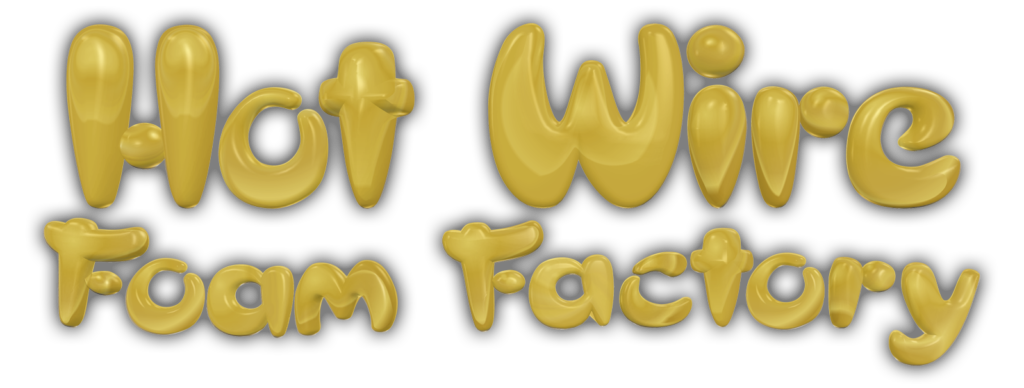3D-Relief Ocean Life Mural
A Marine Life Mural Constructed Out Of Foam
Dottie Natal and David Gutierrez
Designed and sculpted by Dottie Natal (co-owner of the Hot Wire Foam Factory business), this 3-D bas-relief mural adorns the side of Hot Wire Foam Factory’s office/warehouse in Lompoc, California. The background of the mural is 4 inch EPS foam coated with Exterior Foam Coat and Boost, the background was then painted with acrylic mural paints.
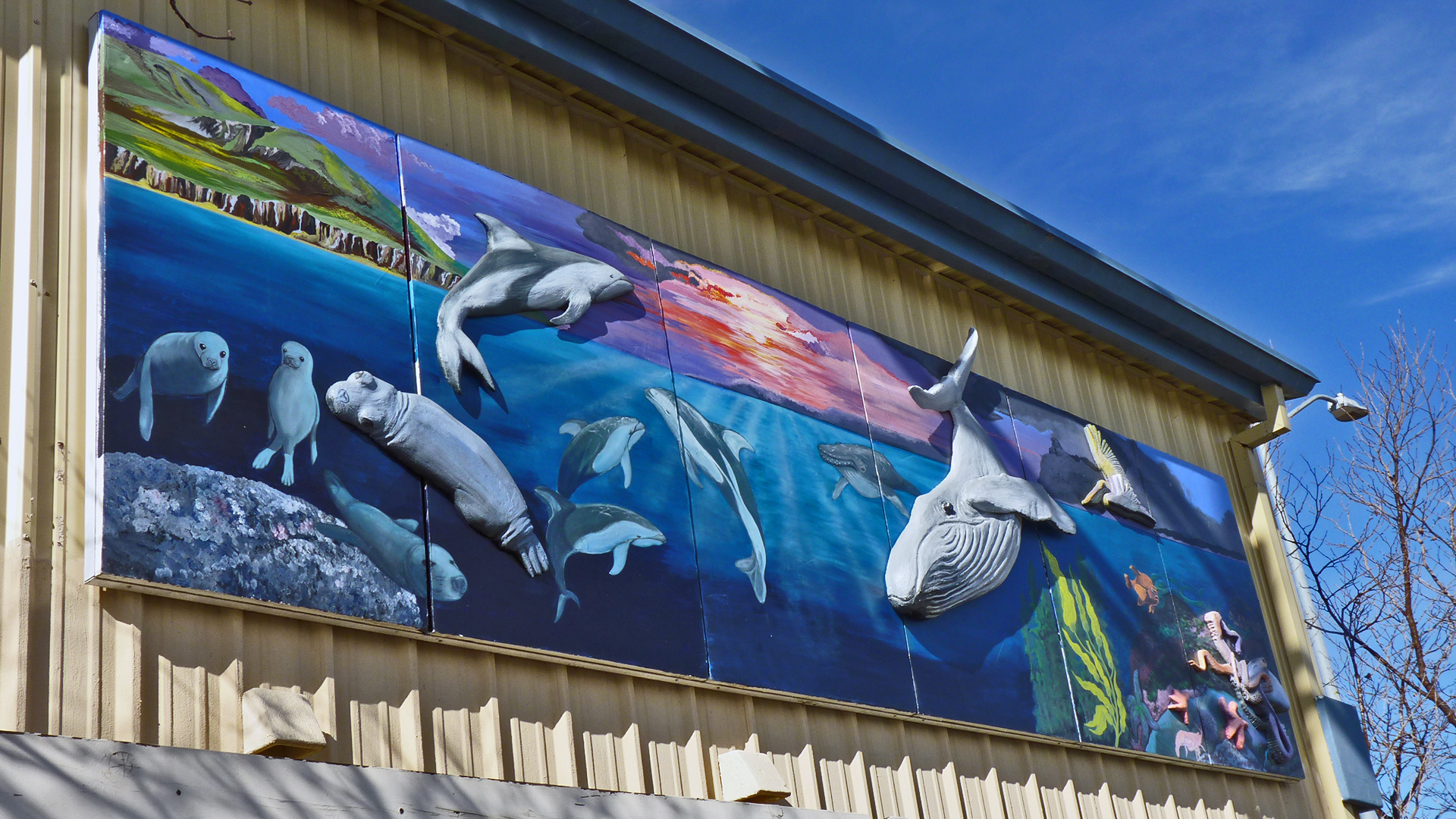
The City of Lompoc’s Economic Development Committee recognized Hot Wire Foam Factory with the Economic Vitality Award (EVA) in 2017. They were recognized for contributing to the manufacturing industry in town and for adding to the City’s mural collection with a unique, 3D mural on the side of their building. In business since 1991, Hot Wire Foam Factory manufactures craft, professional and industrial foam cutting tools, supplies and accessories.
The various 3-D elements were cut from layers of 1-inch and 2-inch EPS foam, glued together using Foam Fusion, and carved with the Hot Wire Foam Factory Sculpting Tool, Freehand Router and Hot Knife. Completed figures were then sanded and coated with Exterior Foam Coat.
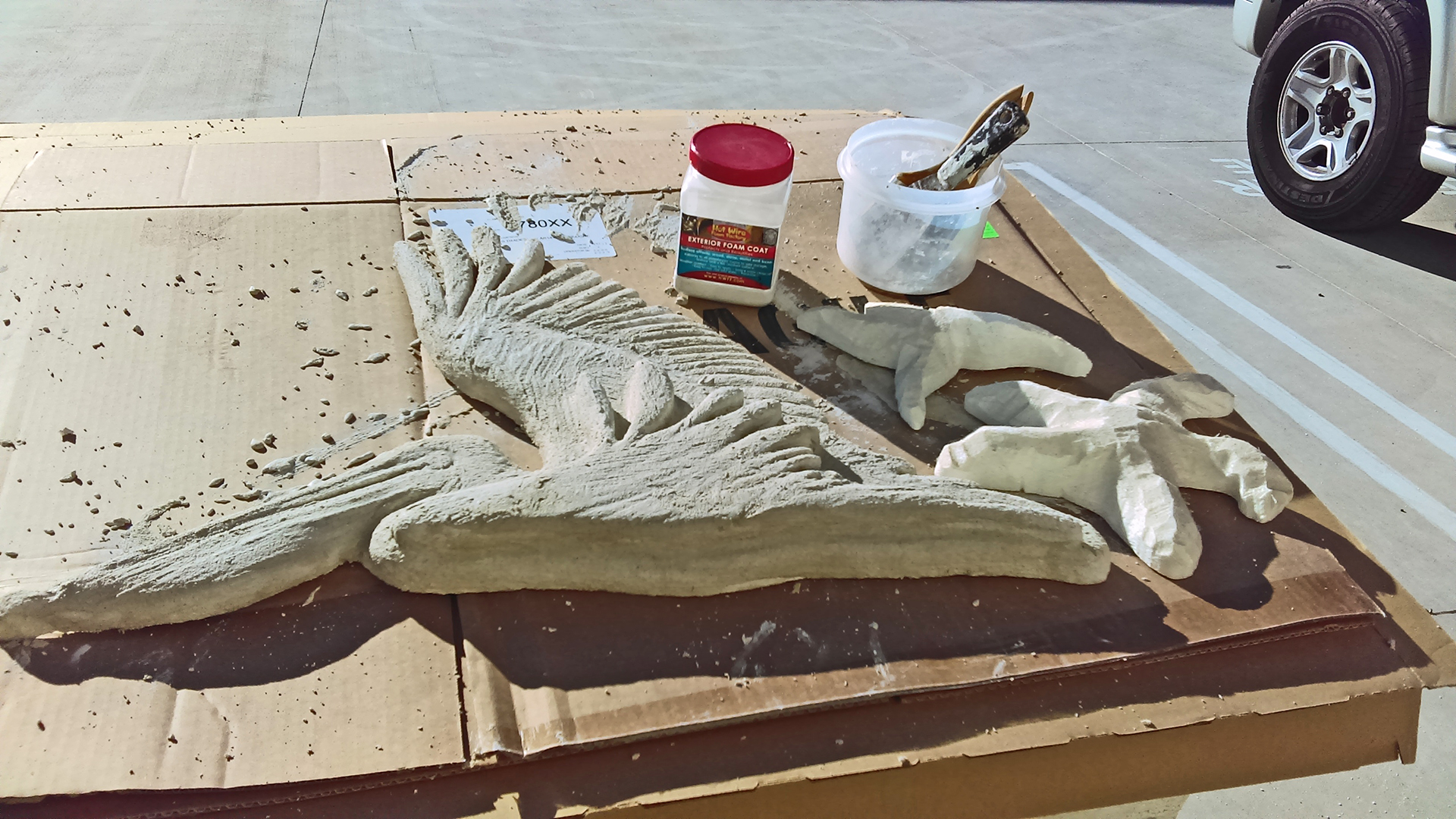
The largest element on the mural is a California Grey Whale. All of the animals and plants depicted are part of the ocean community in the Pacific Ocean. David Natal, the founder and co-owner of Hot Wire Foam Factory, is an avid surfer and sees most of the elements in the mural while out in the ocean. The coastline shown in mural is from the stretch of coast David loves to surf. Dottie designed the mural to honor his love for the ocean (and to make sure that the office was a welcoming environment for David and the other employees to work.)
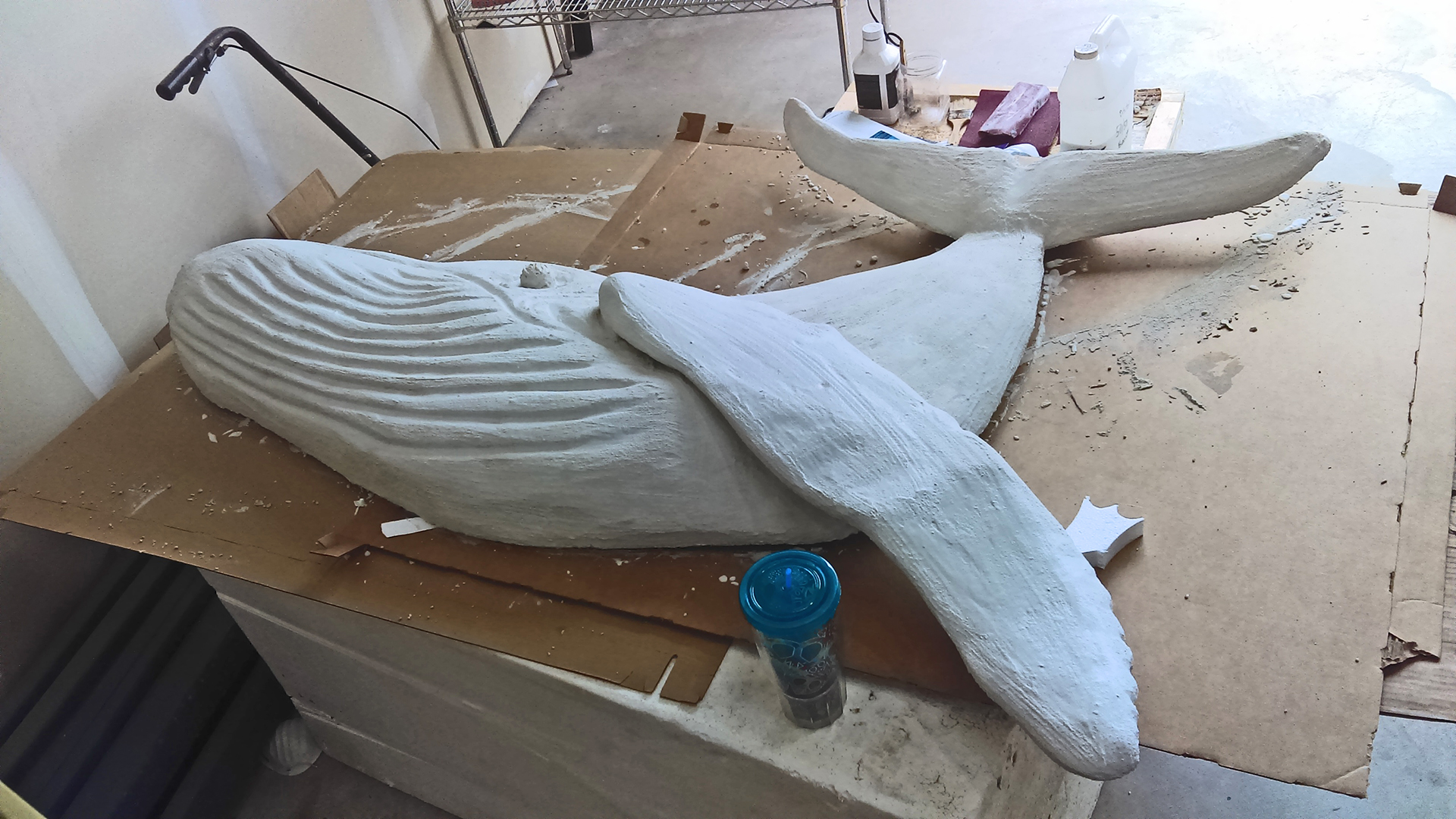
As each creature was completed, it was painted the natural colors of that animal in its underwater environment. Using the Industrial Hot Knife, cutouts were made into the back of the larger creatures and wooden blocks were embedded using StyroGoo to glue them in. A corresponding block was embedded into the panel and the creature was then bolted on. This allows for removal of elements at some future date if they ever need to be repainted or the mural needs to be moved.
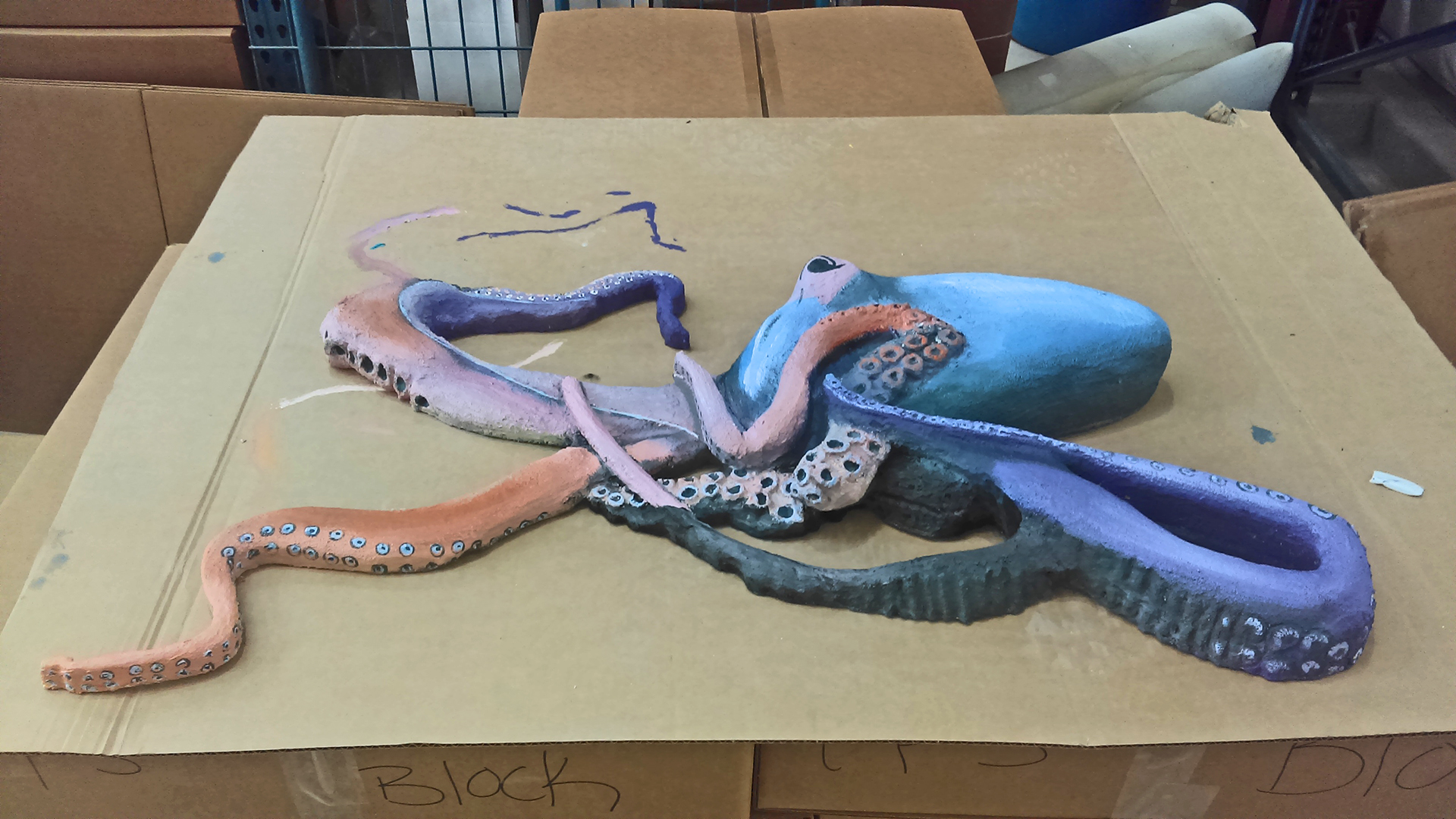
The panels, each 4 foot by 6 foot, were painted by Dottie Natal with the help of David Gutierrez, a muralist living in Lompoc, California.
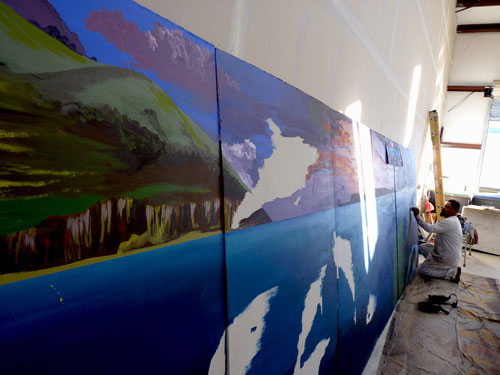

The orignal design was created by Dottie in Photoshop, using various paint tools in the software, then printed out on paper for reference. You can see the reference picture taped to the top panel of the mural boards, below. Many of the images used came from photos taken by David or Dottie.
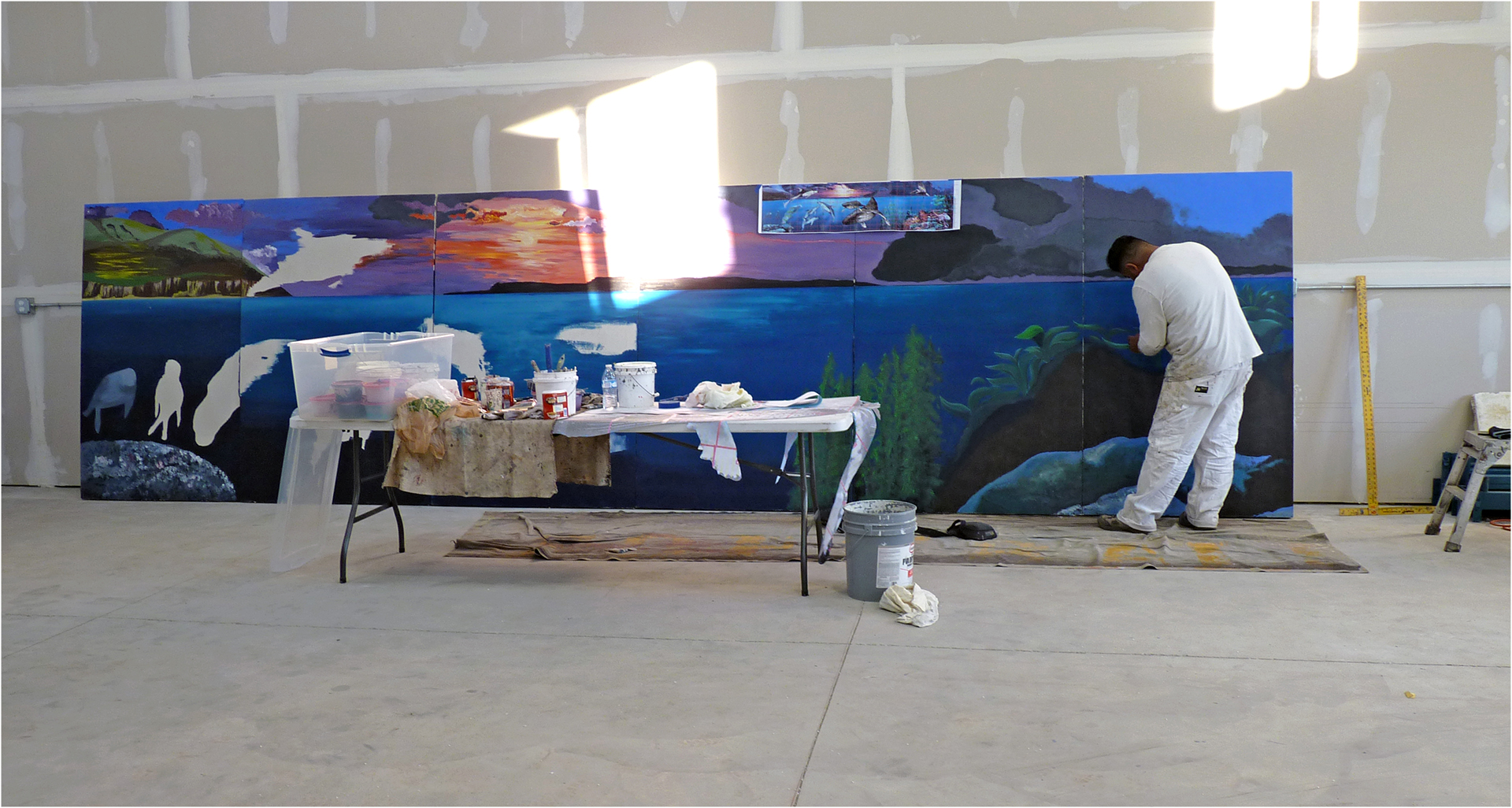
A scaffolding for the panels was attached to the side of the building, consisting of aluminium bars. Wooden blocks were embedded and glued into the panels so they could be bolted into this frame. Being made of EPS foam, these panels are very light weight, making them easy to install.

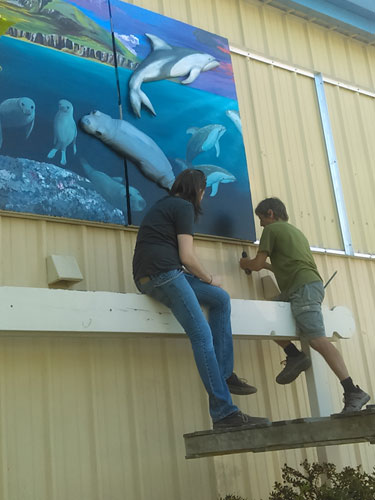
The mural is visible from down the block and is included as one of the many murals in the city of Lompoc visited by people coming to the town, known as the “City of Arts and Flowers.”
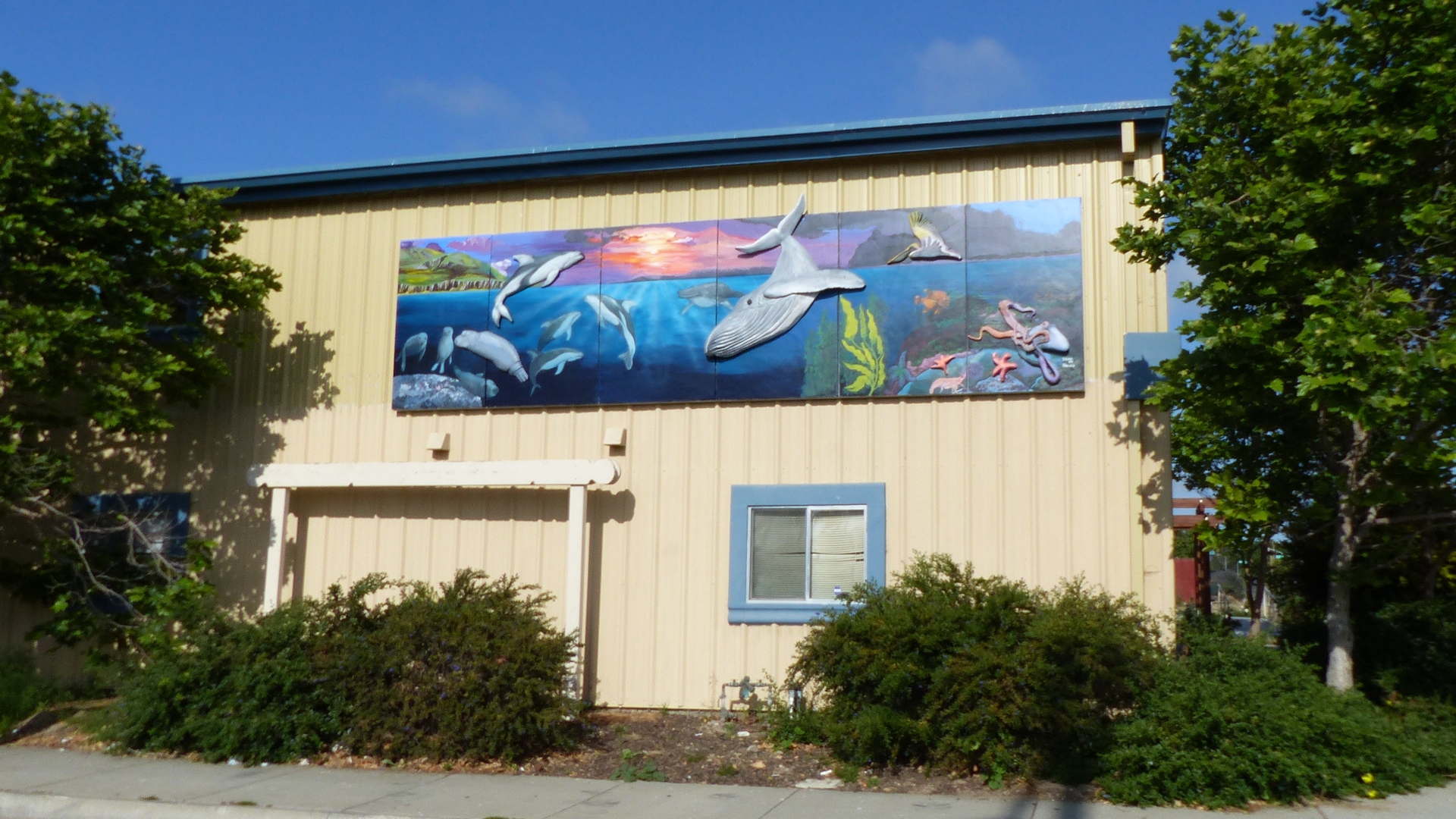
Tips for designing and creating your own large, 3D Mural:
- 3D elements should be flattened as much as possible while still being contoured–use paint to shade the object so it looks more dimensional;
- Make sure you use high quality mural paints and a UV protective coating on the completed painting;
- Consider the viewers perspective as you design objects (in this case, the mural is mostly seen from below, so the bottom sides of the shapes are more exaggerated, and the top sides are filled in to prevent accumulation of dirt and bird nests);
- Attach panels and 3D elements with wood or metal blocks embedded in the foam; in this way you can make sure the panels and elements are secure and can’t fall off in a storm, and that you can easily remove the elements or panels if you need to for any reason.
EPS foam, with a protective coating, is the ideal material to use in large 3D murals. Not only is it easy to carve, it has many other benefits such as being very light weight (and thus is easy to install and not requiring extensive engineering to figure out how to attach to a building) and it is also very low cost compared to other materials.
